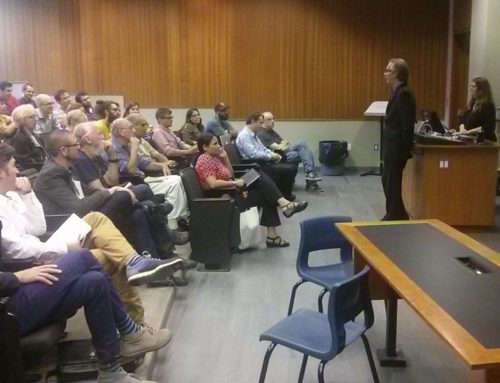24 September 2013
On Friday, 27 September 2013, the Intergovernmental Panel on Climate Change will release the Summary for Policy Makers (SPM) for its Working Group I – The Physical Climate Basis. The full Working Group I report will be placed on the IPCC website (www.ipcc.ch) on 30 September. Due to the leak of drafts of the SPM, there has already been significant media attention to the report. Often these media articles are ill informed or perhaps deliberately misleading. On 15 September, I was contacted by a reporter who was preparing a story for the next day’s paper and also emailed me the leaked report. His story was to be on the stories in other newspapers which, they said, were based on the forthcoming IPCC report. The reporter said the articles indicate a lowering of predictions “or as Matt Ridley puts it in the Wall Street Journal, ‘the new one dials back the alarm.’”
The particular articles were in the UK Daily Mail (1) and the Wall Street Journal (2).
On investigation, I could see that the Mail article stating that the new IPCC report had the rate of warming half of what the 2007 report said, was totally misleading. The author was comparing the IPCC 2013 statement that it was warming 0.12°C per decade for the past 50 years (1951−2012) with the IPCC 2007 statement that the warming rate was about 0.2°C per decade for the past 25 years (1980-2005). He did not mention that the 2007 report gave an estimate of 0.13°C plus or minus 0.03°C per decade for warming averaged over the past 50 years; the reports were actually consistent. (This is based on the article as originally posted, on September 14; on September 19 it was revised, but it continues to be misleading.)
The key point in the Wall Street Journal editorial is that the climate sensitivity, the change for a doubling of atmospheric greenhouse gases, has been lowered and implies that it is “dialing back the alarm”. The 2013 report says the sensitivity is between 1.5°C to 4.5°C, while the 2007 report said the corresponding numbers were 2°C to 4.5°C; not much change in my opinion.
Neither of of the articles bothers to quote the main policy-relevant conclusions that the SPM highlighted, such as: “Each of the last three decades has been warmer than all preceding decades since 1850 and the first decade of the 21st century has been the warmest (see Figure SPM.1). Analyses of paleoclimate archives indicate that in the Northern Hemisphere, the period 1983–2012 was very likely the warmest 30-year period of the last 800 years (high confidence) and likely the warmest 30-year period of the last 1400 years.” Note that Very likely means 90–100% probability and Likely means 66–100% probability. The IPCC also commented that: “It is extremely likely that human influence on climate caused more than half of the observed increase in global average surface temperature from 1951−2010.” And that: “Continued emissions of greenhouse gases would cause further warming. Emissions at or above current rates would induce changes in all components in the climate system, some of which would very likely be unprecedented in hundreds to thousands of years.”
These messages continue the IPCC messages that should be taken seriously by societies and their governments and lead to some actions. It is unfortunate that certain media will misquote or emphasize certain issues in order to convey their pre-conceived message. Then this information will be used by governments who do not really want to take any action on climate change, to justify their actions. Unfortunately not much is happening now especially in Canada and some other parts of the world.
These comments are based on the draft versions of the Summary for Policy Makers (SPM). The drafts of the SPM are prepared by teams of scientists, including some of those who have written the chapters of the assessment. The content of the individual assessment chapters are the responsibility of the authors – the scientists who write them and their scientist review editors. These chapters go through a more extensive review process than any paper published in a scientific journal, based on this author’s experience. The Summaries for Policy Makers are, on the other hand, reviewed and approved “line-by-line” by governments; the process then reflects the consensus view of all governments. The draft SPM had not yet gone through the government approval process and hence what is released on Friday may well be different than the leaked draft. It would be interesting to study how the media reports based on the leaked drafts influence government delegations, who go to the final plenary sessions and debate and approve, through consensus, the draft SPM. This author has been both a lead author of a chapter (3 times) and the head of a government delegation to a SPM-Synthesis review meeting; very different processes and meetings.
This is the fifth full assessment by the IPCC, going back to 1990 and it is the first time that the full report, Working Groups I, II, and III, and the overall Synthesis Report are not being all released simultaneously. This week it is WG I; next March will be WGII (Impacts, Adaptation and Vulnerability) followed by WGIII (Mitigation – emissions reductions) in April and then the full Synthesis Report in October 2014. Thus, the IPCC reports will be in the media for over a year. With the increased attention and pressure on the IPCC, both by favorable media and deniers of climate change, it is clear that the IPCC needs to take some training in media and strategic communications.
(2) http://online.wsj.com/article/SB10001424127887324549004579067532485712464.html





